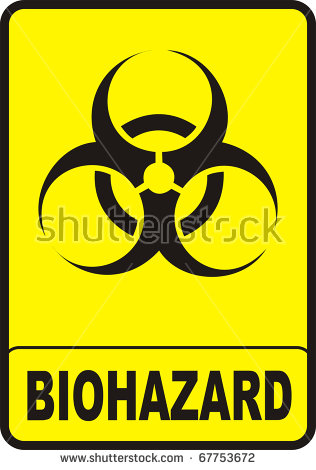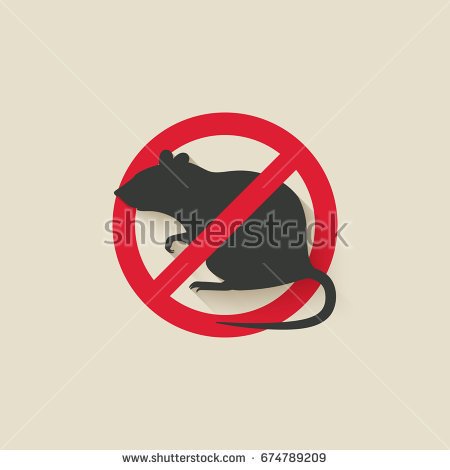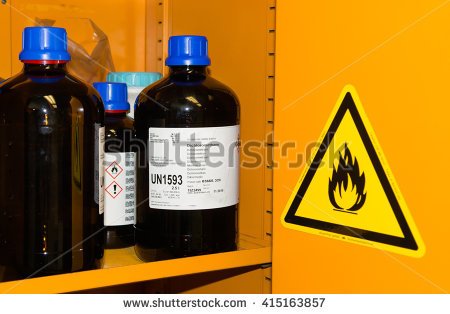LABORATORY HAZARDS AND PRECAUTIONS
Of course we are celebrating Christmas and we don’t want any form of accident around us many of us visit the laboratories but do we know what kind of hazard we face daily even as we work. I hope this post will shed light on laboratory hazards and their precautions.

What are laboratory hazards?
Laboratory hazard is defined as anything that has a potential to cause damage. People working in the laboratory are exposed to potential hazards. Risks can be minimized by eliminating dangerous situations where possible, establishing clean and safe work habit, taking proper precautions at all times and maintaining awareness of good safety practices.
The types of hazards which laboratory workers may be exposed to can be classified into three categories:
CHEMICAL HAZARDS
A chemical hazard is a type of occupational hazard caused by exposure to chemicals. Exposure to chemical can cause acute or long-term detrimental health effects. There are many types of hazardous chemicals including neurotoxins, dermatologic agents and carcinogens.
Chemicals can enter the body through contaminated food, inhalation and absorption through the skin. Strong acid and alkalis are the most common corrosive chemicals to which clinical technologists are exposed. This occurs mainly through the splashing of reagents during their preparation.
Precautions against chemical hazards include:
- Corrosive chemicals should be appropriately labelled.
- Care must be taken when pouring reagents to avoid splashing.
- Chemicals for which there is little or conflicting information about potential toxic effects should be treated as toxic.

CARCINOGENS
These are chemicals that are liable to cause cancer if they come in contact with the body system. However, the danger of contracting cancer by exposure to carcinogenic chemicals in a clinical chemistry laboratory is very low because most of the known carcinogens are not used. Examples of regulated carcinogens include benzidine and 2-acetylaminofluorine.Precautions to be taken when preparing a reagent containing a carcinogenic substance include:
- Wash hands with soap and water immediately after preparing the reagent.
- Take care not to spill the powder or breathe in its dust while weighing or transferring the chemical. A nose guard should be worn.

BIOLOGICAL HAZARDS
Biological hazards are infectious agents such as bacteria, virus, fungi or parasites which may be transmitted via contact with infected patients or contaminated objects, body secretions, tissues or fluids. In the laboratory, both Hepatitis B and HIV can be transmitted by infected blood and body fluids when they are in contact with the inside of the mouth, the eye, or with broken skin. Neither of these two diseases can be transmitted through the air.The following precautions should be taken to avoid biological hazards:
- All needles should be properly disposed.
- Laboratory workers should cover all cuts properly and wear gloves to avoid contacts with specimens.
- A spill of patient’s serum or urine on the floor or laboratory bench should be wiped off immediately with hypochlorite solution to inactivate viruses and bacteria.
- Always put on your laboratory coat to prevent laboratory specimens from spilling on clothes.

PHYSICAL HAZARDS
Physical hazards are a type of occupational hazard that involves environmental hazard that can cause harm with or without contact. They include cuts from broken glassware, fire from leaking gas cylinder or electrical faults.
The danger of fire is always imminent as long as there are volatile, flammable solvents in the laboratory. A static spark or a spark from the refrigerator’s thermostat can cause an explosion.
The following precautions should be taken to prevent fire outbreak:- Place fire extinguishers at strategic locations in the laboratory.
- Smoking should be prohibited in the laboratory.
- All connections of flammable gases to instruments such as the flame
photometer should be leak-proof. - Always work in a fume chamber when working with flammable solvents.
BROKEN GLASSWARE: any glassware e.g. pipettes, flasks and beakers with broken tips should be discarded as they are source of danger.
Conclusion
Laboratory hazards should be taken seriously as you don’t want to mess with the lives of people or you don’t want to cause panic to your patients when analyzing or dealing with their treatments. Everyone deserves and needs to know about the hazards that can occur in the laboratory.All images sourced and referenced from shutterstock.

Many researchers working with viruses must be vaccinated as well, which i personally find a bit disturbing ^^ so i stay out of the virus projects.
I rather work with drosophilia or bacteria :)
Do you work in research lab environment ?
Good post, Peace.
Thank you. I don't work in a laboratory but I have seen some mistakes made by this people so I made a research consulting a friend who works there. I composed the post after his lectures and some research.
Nice!
@originalworks
The @OriginalWorks bot has determined this post by @adetola to be original material and upvoted it!
To call @OriginalWorks, simply reply to any post with @originalworks or !originalworks in your message!
thanks for the advice. Lucky I hardly go to lab. 😂
Thanks @evavieka lots of people actually do but they don't know what it means to visit a laboratory.
Even for a industrial kitchen has to get many of this warnings. And for people dont understand this, is better to teach them the importance of this. Is part of the community or govermment to be responsable to avoid accidents cause of the ignorance of the warnings. Great contribution, my dear.
Yeah @dcardozo25#7818 thanks for reading. People toy with their lives daily
Good one
Thank you @pangoli I seem not to have done enough with the post. Am glad I could share.
Quite informative
Thanks
Love the details man. Keep it up.
Thanks @amarbir